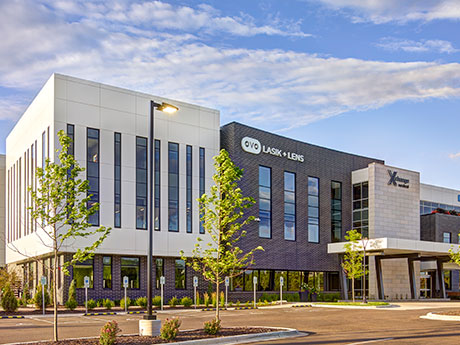By Jill Rasmussen, Davis
The Minneapolis – St. Paul medical office building (MOB) market remains strong with calculated strategic growth from both hospital systems and independent clinics. The MOB sector has been resilient during the pandemic, economic challenges and local civil unrest. Providers have been focused on expanding into new market areas to locate close to their patient base, providing full-service medical hubs offering outpatient surgery and specialty services to communities while offering lower-cost care away from a hospital campus.
The overall market remains very stable with a current vacancy rate of 8.6 percent on-campus and 10.6 percent off-campus. There remains high interest in off-campus locations for most non-acute care for location access and cost savings.
Base rents continue to increase both on- and off-campus due to demand and higher new construction pricing. Base rates have reached nearly $22 per rentable square foot (rsf) on average on-campus and $21/rsf for off-campus existing product.
New MOB construction rates have increased from $24.50/rsf to $28+/rsf due to interest rate hikes and supply chain/labor issues, but new construction projects continue to move ahead based on provider’s strategic initiatives.
Annual base rent increases are trending up due to current inflation levels from a historical 1.5 to 2 percent range to 2.5 to 4 percent. Total operating expenses range from $16 to $21/rsf with real estate taxes being a large portion. Lease terms remain long and average 10+ years with 15 to 20 years for new construction projects.
Current tenant total buildout costs are also increasing at $150 to $180/rsf with surgery space at over $250/rsf. Shell construction costs have risen about 25 percent from one year ago to approximately $170/rsf.
Development pipeline
Currently, there are 429,450 square feet of proposed new development projects throughout the Twin Cities, 386,861 square feet of projects under construction and 514,996 square feet of projects that have recently been completed. These projects have been driven by large system and independent clinic expansions including ambulatory surgery center JV’s and specialty service clinics.
Xchange medical was a new project that opened in November 2021 fully leased with an eight-operating room surgery center and three specialty clinics, including ENT and eye. This project was centrally located and provided a great relocation and consolidation opportunity for the tenants.
Specialty clinics like MNGI Digestive and Twin Cities Orthopedics have built several full-service new development projects in the metro area that provide close, comfortable locations for their patients.
An example is Maple Grove Specialty Center, which MNGI leased half of the building for an endoscopy center and clinic. Minnesota Oncology leased the other half prior to construction completion and will be moving a full-service cancer center off-campus here into a new strategic location. We anticipate continued new development projects in the market as providers look to update older clinics and locate closer to patients.
Investment sales
The medical office investment sector has remained strong with continued cap rate compression and high demand for quality assets across the country and locally. With the aging demographic and need for convenient care, we don’t see this slowing down significantly even with current economic pressures.
Stabilized Class A MOBs have been priced and sold in the 5 to 5.5 percent range with continued active interest from the healthcare REITS and individual investors.
HealthPeak Properties bought three Minnesota assets in Burnsville from Harrison Street totaling 171,172 square feet that were included as part of a $1.6 billion national portfolio sale transaction.
Grove Health West in Maple Grove sold for over $550/sf to Harrison Street and Dean Lakes Health in Shakopee sold to MedCraft for nearly $280/sf. Our local issue is having enough quality assets on the market for sale to match the high demand.
The Twin Cities medical office market should continue its steady growth trajectory as providers seek outpatient locations to provide convenient and cost-effective care for their patients.
Jill Rasmussen is a principal with Davis. This article originally appeared in the September 2022 issue of Heartland Real Estate Business magazine.



